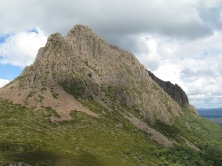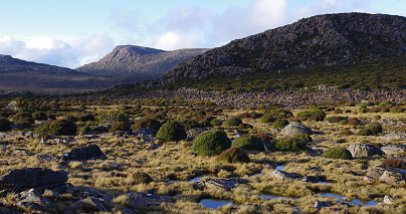We know that the Alpine Ash forests are struggling to survive in the face of climate change driven fire regimes that are bringing fire into these forests more frequently.
The scale of this threat is so extreme that the Victorian government has a program specifically responsible for reseeding forests that are on the verge of ecosystem collapse.
New research underscores, yet again, that the mountain forests face grave threats from climate change and that this could lead to the transformation of these forests.
The report ‘The role of climatic variability on Eucalyptus regeneration in southeastern Australia’ looks at regeneration in Mountain Ash (Eucalyptus regnans), Alpine Ash (E. delegatensis), and high elevation mixed species (HEMS) forests after disturbance.
The authors say:
‘In this study, we investigated the post-disturbance regeneration dynamics in these forests. We sought to determine the direct impact of climate variability on regeneration and the interactive effects of climate, topography, and edaphic factors on the regeneration success of Eucalyptus. Data was collated from regeneration surveys conducted in 881 coupes, totaling ~55,000 ha of forest harvested and regenerated between 2004 and 2012. The time-period analyzed included the Millennium Drought, an intense and prolonged drought that lasted from 1996 to 2010.
We found that regeneration success was closely tied to the timing of the Millennium Drought. Declines in regeneration during the period of drought were greater in E. regnans and E. delegatensis than HEMS forests, suggesting that regeneration in the HEMS forests is more resistant to drought. We found that seasonal precipitation and temperature had the greatest influence on regeneration success of Eucalyptus. Responses varied by species, however autumn precipitation had the strongest influence on abundance of regeneration of E. regnans and E. delegatensis, while summer temperature was more important for HEMS species. Our findings highlight the importance of seasonal and annual climate variability on Eucalyptus regeneration and portend potential declines in regeneration success in a warmer and drier future for E. regnans and E. delegatensis.’
In other words, this research shows that in times of climatic stress, burnt or disturbed Ash forests struggle to recover compared with mixed species forests. Over time, it can be expected that these mixed species forests will increasingly move into areas that are currently covered by Ash species. This is part of the gradual transformation of the mountain forests as we currently know them.
We already intervene heavily to try and keep Alpine Ash communities viable in the face of rising threat from fire. The authors raise the possibility of further intervention:
Our findings also suggest that managers could undertake planned adaptation to build in resilience to a warmer and drier climate. To achieve this, managers could sow a mix of E. regnans, E. delegatensis and HEMS seed where ecologically suitable. This could lower probability of regeneration failure. Such an approach would represent a bet-hedging strategy as species in our study exhibited varied responses to climate variability.
Authors: Anu Singh, Patrick J Baker, Sabine Kasel, Raphael Trouve, Stephen B Stewart and Craig R Nitschke.
























































Leave a comment